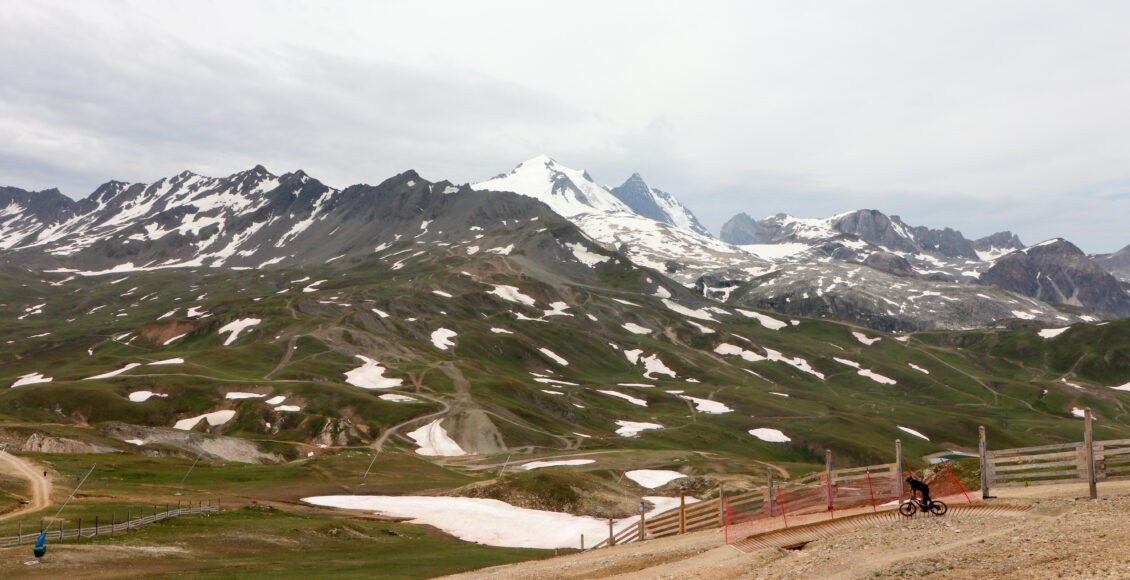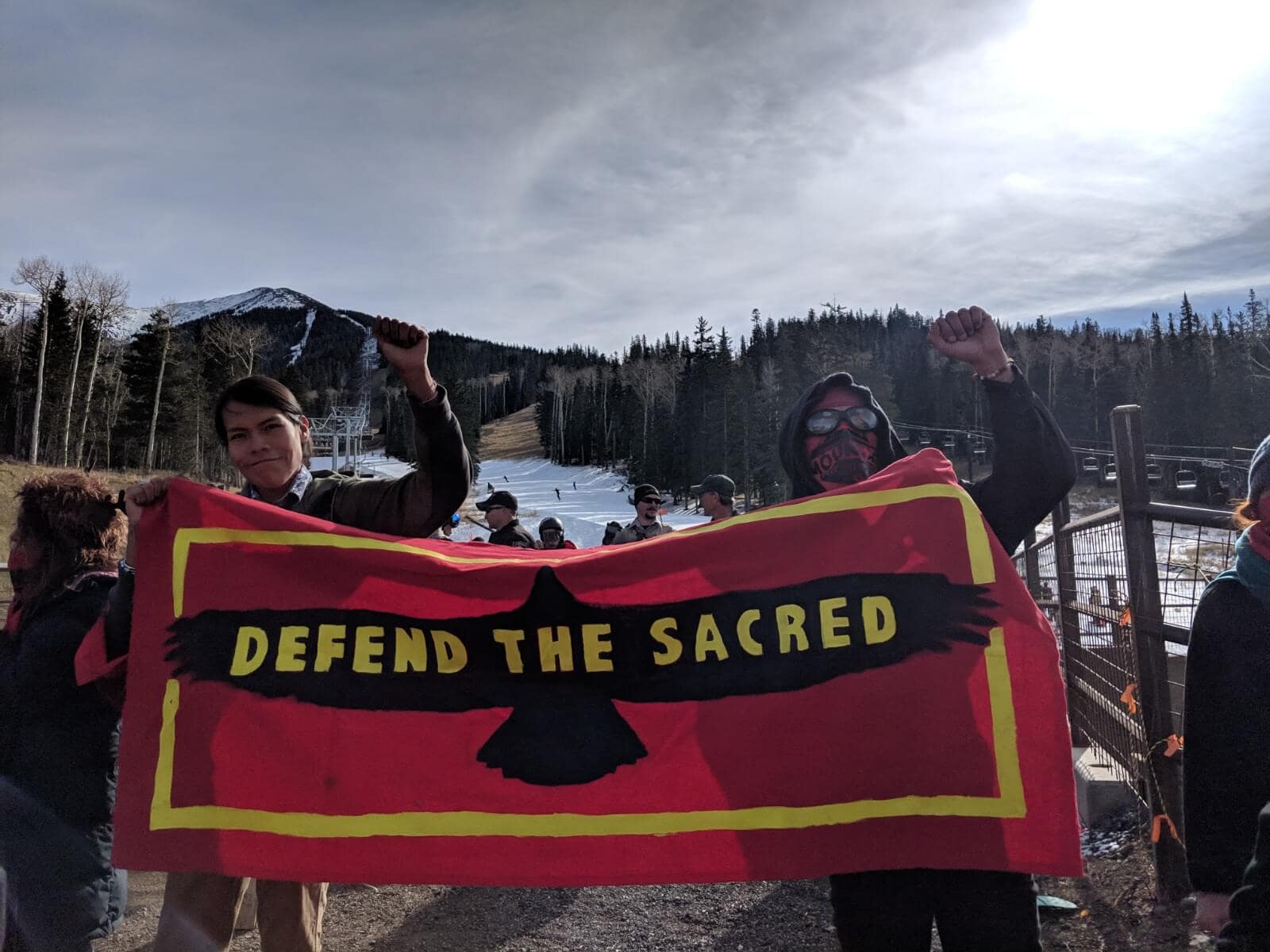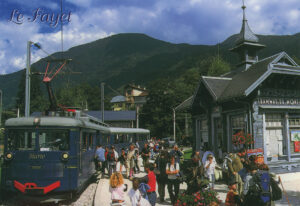Can Ski Resorts Balance the Challenge of Declining Snowfall and the Rising Costs of Snowmaking?
 “Vacances_180418” by Joan is licensed under CC BY-NC 2.0 DEED.
“Vacances_180418” by Joan is licensed under CC BY-NC 2.0 DEED.
The climate crisis is forcing the tourism industry to adapt and change. One of the most impacted industries is the winter activities sector. Last February, more than 60 per cent of Montreal’s outdoor skating rinks were closed in mid-February due to mild temperatures. This pattern can be observed across Canada, as British Columbia’s ski resorts struggled this winter to remain open with unprecedented low snow levels. Western Canada’s alpine snow sports industry employs nearly 30,000 people, but the impacts of global warming are not just a distant concern; we are already experiencing them in our daily lives.
Ski resorts are the most affected by a slowdown in winter activities, particularly individuals working at resorts like lift operators and ski patrollers. Climate change is leading to a shorter ski season, as slopes lack sufficient snow at an earlier date each year. Currently, the average length of a season for a resort in British Columbia is 160 days. However, the season is predicted to be reduced to 130 days by 2050. Given this dynamic, the earlier closing date represents a financial challenge for individuals employed at resorts. Other businesses that operate in tandem with the ski season, like resort hotels, restaurants, and shops will also be negatively affected by a shorter season. This is because snow availability is the most dominant weather variable for winter mountain tourism, as without it, tourists are not attracted to the region.
To mitigate the effects of global warming on winter activities, many ski resorts have engaged in snowmaking, a process of forcing water and pressurized air through a snow cannon. The goal is to supplement the natural snowfall and extend the ski season by providing additional snow on the slopes. However, snowmaking is criticized for its environmental impact, particularly due to massive water use. For instance, 43.4 million m3 of water are required to produce over 42 million m3 of snow. Witnessing the recent increase in the environmentally harmful practice, environmental groups have protested against resorts and snowmaking. For instance, Indigenous communities have accused the Arizona Snowbowl resort of drawing water and occupying Nuva’tukya’ovi, a mountain providing life-giving rain and spiritual sustenance. The principal issue raised by the Indigenous groups is that the colossal amount of water the resort requires prevents farmers, who cultivate without chemical fertilisers or irrigation, from enjoying sustainable harvests. Research has found abnormally high phosphorus and nitrogen levels in the harvests’ soil stemming from snowmaking; these nutrients disrupt the ecosystem in place.

The concerns of environmental and Indigenous groups are not likely to be addressed because the ski resorts need artificial snow to survive. For mountains across North America, snow is becoming increasingly rare and this is not about to change with current global warming trends. Ski resorts must engage in innovative solutions, already observable in some Canadian regions like Alberta. Sunshine Village Ski engages in snow farming, which involves setting up miles of fencing across terrain to capture large amounts of natural snow. This process gives the resort snow reservoirs, and limits the use of snowmaking. However, it must be stressed that not all resorts have sufficient levels of snow to create such natural reservoirs, depending on their geographical region. Resorts in British Columbia and Alberta are less impacted by global warming and lower levels of snow. Conversely, the Eastern region has almost no choice but to use snowmaking for the majority of the year.
Resorts are increasingly turning to four season tourism: being able to welcome vacationers and maintain a thriving economy in winter, summer, spring and fall. Attracting tourists during the summer generates another source of income for resorts as they can now benefit from what was called the low season. To benefit from four season tourism, resorts must propose alternative activities during warmer months, such as hiking, biking, and ziplining. Although the seaside has long been the dominant summer destination, the mountain is becoming a natural and peaceful spot for vacations. For example, the city of Chamonix quickly became a top destination in Europe and adapted well to summer tourism as it welcomes twice as many tourists during this period than the winter. Chamonix can count on exclusive hiking routes around the Mont-Blanc that attract hikers across the globe.

Considering the success of the European model, four season tourism is becoming a trend adopted by ski resorts in North America. The region has invested in a wide range of infrastructures to make the most of its varied natural landscapes, which alternate between forests, mountains, and lakes. In Canada, these investments are a result of the Trudeau government’s objective to grow tourism revenue 40 per cent by 2030. Part of this strategy includes focusing on the summer season to draw in more visitors. Whistler is one resort expanding its summer activities such as biking, hiking, and ziplining. Whistler’s ziplining courses were developed by international companies like Ziptrek Ecotours that established their business in Canada due to the growing demand in this location. The resort welcomes more than three million visitors annually and 55 per cent come during the summer, a season on the rise. Thus, the expansion of four season tourism presents a significant opportunity for North American resorts, offering a sustainable solution to counter shorter seasons and diminishing snowfall.
Edited by Joseph Pappas
Featured image: “Vacances_180418” by Joan is licensed under CC BY-NC 2.0 DEED.
